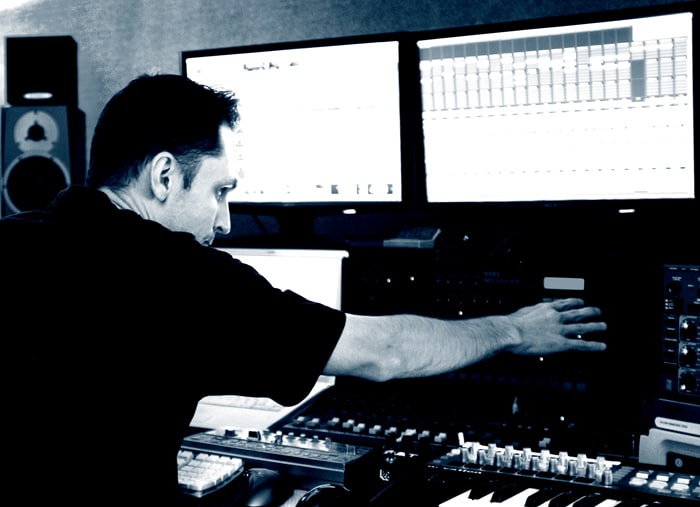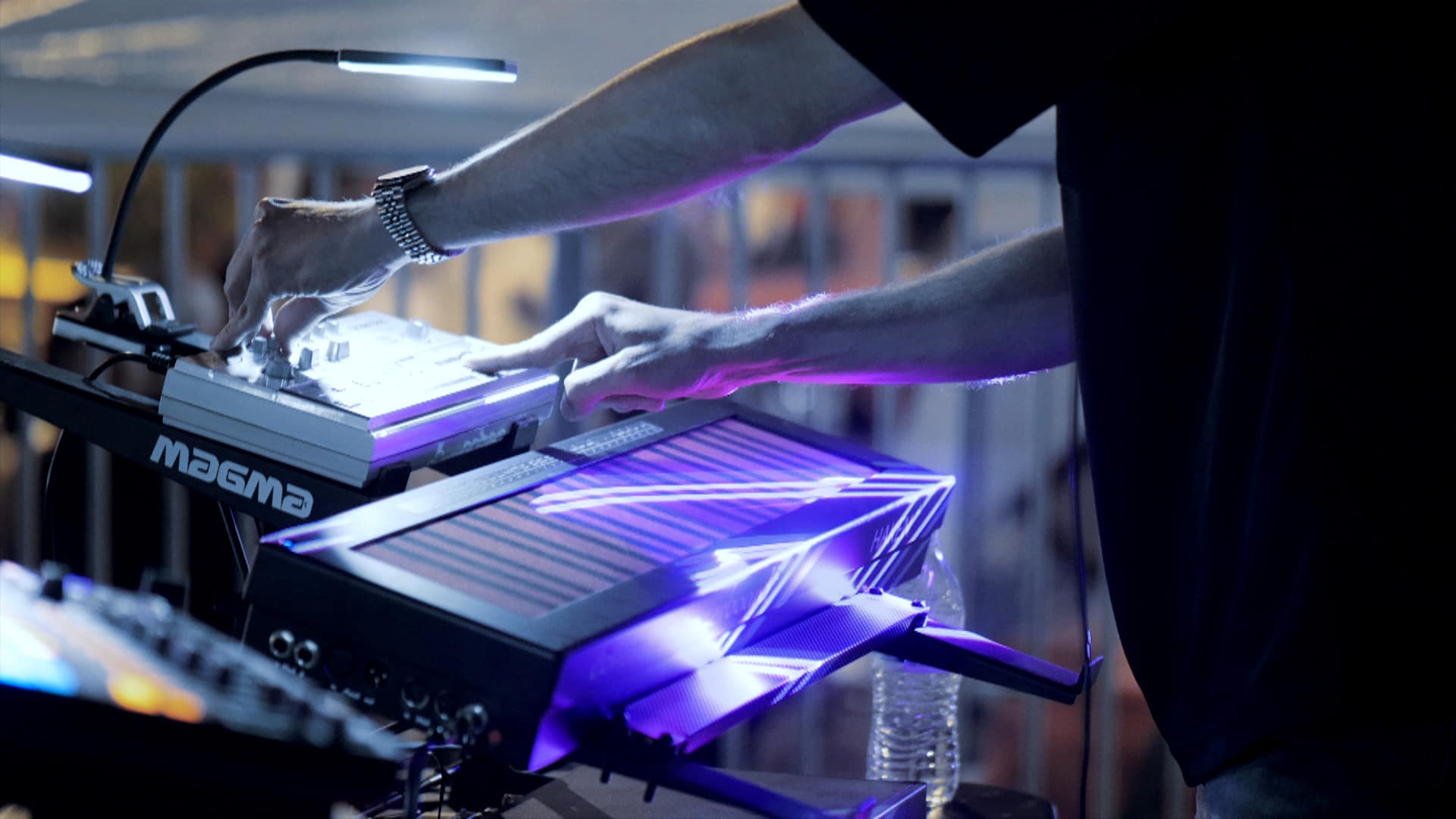Julius Dobos is an electronic music composer, sound designer, film composer and professor for music production in the San Francisco Bay Area. As a renowned psybient producer, he is also known under the alias forgotten future. In this interview, he talks about his colourful life story and cutting edge production techniques.
Find out, how frei:raum once saved Julius’ day.
S: Tell us about your workflow. On one hand back in Europe you realized productions with huge choirs an orchestras. On the other your studio is now set up in a way, that everything is in the reach of your arm.
How has your work changed over the years and what role does innovation play in your approach to composition? Do you prefer the digital or analog realm?
JD: I always thought that it’s the idea that should drive the process and the choice of tools, not the other way around. So in my case, the change in my approach over time is mainly the result of the change in the type of projects I produce. Working with orchestras required a different mindset: I was focused on telling a story, harmonies, orchestration, and tons of pre-production, to make sure that I can get the best performance during those limited recording sessions. A lot of digital work what went into pre-production, like mock-up scores, MIDI performances, were ultimately replaced by the musicians’ performance – which of course is a very analog thing.

Later in my film and television scoring years, the focus was still on storytelling, but with precise visual sync and high production efficiency. There you have more immediate control over every note and sound, but there is rarely any time to mess around and experiment: your composition is guided but also limited by the duration of the scene or cue. Your streamlined process is driven by aggressive production deadlines, so there is usually no time for elaborate MIDI mock-ups or cool sound synthesis: your initial sketch (and sometimes literally your first sketch) quickly becomes the final product. Efficiency and precision means digital, so except for major productions, most everything happens inside of the DAW. I developed Studio CS and my current way of working in those years, with everything at my fingertips in a 180-degree studio setup. It’s a quite complex setup, but over the years it has evolved a lot and became second nature for me to work in it.
Analog is beautiful and digital is exciting.
With forgotten future, I put a major focus on complex sound design and expressive performance, and I take more of a minimalist approach with composition. So lots of MIDI work, sound synthesis, audio processing and performance control technologies are involved in the process. I’ve been in love with MIDI for over 20 years now, so I guess you can say that my composition process is digital. I like that for flexibility. The performance is very analogue, though; I play most every part, one by one, on various types of controllers: on keyboards, a continuum, a theremin, on an iPhone and on physical surfaces… so both analog and digital. I believe this is one of the elements that make forgotten future different from the generally mouse-sequenced tracks of the genre. My sound design also takes place in both domains: on analog synths, virtual analogs, digital synths, a wide range of plugins and with a field recorder. The final mixing work happens in a DAW, and again, with some analog and digital outboard effects and plugins alike. So, I don’t have a preference between the two worlds: analog is beautiful and digital is exciting.

S: In your personal work, are musical innovation and innovation in technology interlinked?
JD: I’d say they definitely go hand-in-hand, but it’s the idea, the musical and creative innovation that’s pulling the technology behind it. What I mean by that is that new technologies are cool and can be impressive, but if I don’t have a need for them, I won’t force them into my workflow just because they’re new, and I won’t use them as some kind of writing inspiration either. Rather, when I have a concept or hear a texture or melody inside, I’ll look for the tool that allows me to sonify it – to ‘materialize’ it so that everyone can hear it. Sometimes I discover tools that allow me to do more than I initially imagined, of course… so yes, tools can be inspiring. But sometimes I’m surprised to find that the tools that I need don’t exist yet. Technology can be a great influencer, but I strongly believe that using it should never become the purpose, the goal … it’s still just a tool that helps to express concepts, ideas and to share feelings that we are experiencing but can’t describe with words.
S: You do keep being busy. You just released the album forgotten future: W1. What are you working on currently? What can we expect next from forgotten future?
JD: I’ve just finished an exclusive mix titled Breakthrough Chroma Mix for a psybient compilation album on AstroPilot Music, called Colours II. Recently I also launched the forgotten future interactive experience, which allows visitors to discover the musical and visual layers of the forgotten future W1 world by experimenting with the sonic ingredients of each track. This past Summer I crawled out of my studio and gave a successful forgotten future live performance in San Jose, California. So now I’m inspired to get involved in more live shows and festivals as well. In the meantime, I’ve started designing sounds and developing some really unusual concepts for the next full-length forgotten future album, W2. The theme of this album is time and our perception of time.